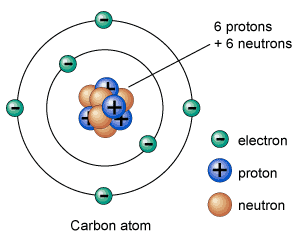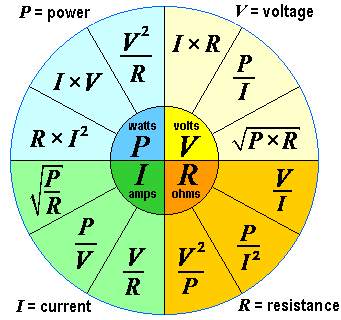Electrical Math and Theory
Atoms have an incomprehensibly small nucleus with protons, neutrons and orbiting electrons. Most atoms do not change their number of protons or neutrons under most circumstances; the different numbers of positive charges in the nucleus are classified into Elements, we find this defines their properties well. Beginning with 1 positive charge in the nucleus called the hydrogen atom, two is helium, three is lithium. The carbon atom has 6 protons, 6 neutrons, and 6 electrons. Check out the periodic table if you haven't already ptable.com

When atoms have a diffrence in charge via gaining or loseing an electron we call them Ions. The outtermost electrons of some elements are valance electrons. These electrons can be removed from the atom even traveling when enough energy is present. When a large number of atoms is grouped, valance electrons are only loosly bound and can travel throughout the lattice in random directions. Electrons are affected by magnetism and charge, we define the pressure on electrons to move in a unit called Volts. We call materials with this property conductors, and we use voltage to move electrons around we define an Amp as the amount of electrons that pass by a point in one second 6.24 x 10 ^ 18 electrons. Also known as 1 Coulomb.

This is the realitive equation space thus far in our journey. You will need to know fractions multiplication and division, exponents and basic algerbra. Eventually trig will be involved. For now I think observing the various power requirments and solving for diffrent properties allows investigation into the electrical hardware one uses.
I was recently interested in the power consumption of my dad's pond pump as it would be realitivly easy to bring offgrid realitive to my house. The pump consumes a max of 200watts of power from the 120VAC outlet. to get the current draw for the pump we divide 200/120=1.6Amps. I can also find the resistance of the system v^2/p=72 ohms. One of the things I wanted to know was that if I was running it how much current an inverter would have to draw from the battery. Basically we know it's a 200watt max so we just need to know the voltage to find the current. I want to have a 48v 14s lithium setup for an inverter running 500watts or less. Therfore 500watts/48v = 4.16amps, I can use this to help calculate the system loss later too. (Actual vs Theoretical)
Ok I'm using this is a supplement to my learning so I hope you learn something too. SteemOn!